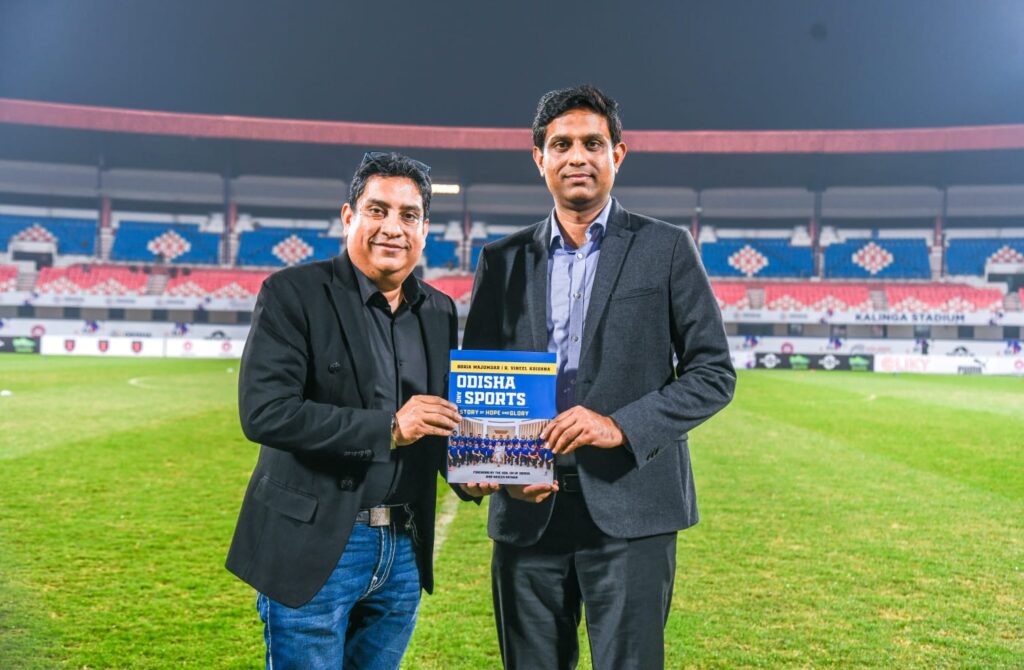Decades from now, when sports historians look back at the time when India took its first steps to becoming a sporting powerhouse, they will zero in on the role that the state of Odisha played, inspired by the visionary leadership of Shri Naveen Patnaik. Derided for decades as one of India’s ‘sick’ states, Odisha’s investment in sporting infrastructure and athletes – both teams and individuals – played a huge role in India’s sportspersons finally finding voice on the big stages.
Since independence in 1947, most governments, whether at central or state level, had merely paid lip-service to sport. Awards and cash rewards would be handed out sporadically, but little thought was given to building a sporting nation. While countries like China forged ahead because the common person had access to high-class sporting facilities – whether gymnasiums, swimming pools or sports fields – India lagged way behind.
Also Read: Kalu Charan Chowdhury and the Panposh Cradle of Indian Hockey – part 1
Shri Patnaik recognised the power of sport to bring about lasting social change, especially among women and the underprivileged. And when the state decided to host the 2017 Asian Athletics Championships after Jharkhand pulled out, he ensured that no effort was spared. It was a herculean task, especially in the middle of a monsoon. The 90-day challenge – as his officials and administrators, including Shri Vineel Krishna, considered it – required 20-hour work days, the complete refurbishment of a dilapidated Kalinga Stadium and seamless coordination of multiple teams and agencies. By the time the event was over, at a state-of-the-art facility that was the envy of the rest of India, Asian Athletics officials were talking of how high the bar had been set for future hosts.
Odisha’s commitment to sport didn’t stop there. In 2018, it hosted one of the most successful FIH Hockey World Cups ever. And despite Covid-19 causing untold hardship and disruption to timelines, a brand-new stadium and sports complex came up in Rourkela in time for the next FIH Hockey World Cup in January 2023. The Birsa Munda Hockey Stadium is now the benchmark for the sport, and it was testament to the holistic view that the government took that an athletes village sprung up around the venue so that the players would be spared a long commute to luxury hotels in other cities.
EXCLUSIVE 🚨
For years Odisha struggled as one of India’s most backward states. However, under the visionary leadership of Naveen Patnaik, it has undergone a remarkable transformation, excelling in human development, disaster management, and emerging as a trailblazer for India’s… pic.twitter.com/VfKEO33whO
— RevSportz (@RevSportz) January 26, 2024
But these big-ticket events are just the tip of the iceberg of change. Kishore Jena finishing fifth in the javelin at the World Athletics Championships and then pushing Neeraj Chopra, the favourite, all the way at the Asian Games is just one example of the dramatic strides being made by athletes who use facilities comparable to the best in the world.
The revival of the Indian men’s hockey team also has a strong Odisha hand behind it, with the government underwriting expenses. This support has extended to rugby and many other sports. Almost every month, a new project is envisaged, and no less a person than Arsene Wenger, the legendary Arsenal coach who now works for FIFA, was blown away by the infrastructure that the state has put in place.
Glad to release the book, ‘Odisha Sports: A Story of Hope and Glory’, co-authored by noted sports journalist @BoriaMajumdar & Secretary of @sports_odisha, @rvineel_krishna. Appreciate the effort of authors to chronicle #Odisha’s sustained effort to create a vibrant sports… pic.twitter.com/TTNwh80fsv
— Naveen Patnaik (@Naveen_Odisha) January 25, 2024
In a world where bad or depressing headlines have become the default setting, you need to watch this documentary just for the hope it inspires. It’s testament to what can be done when there’s vision, and when people rally around a worthwhile cause. If India sport is marching proudly forward, it’s because Odisha lit the torch.
Watch this RevSportz documentary series for the next 7 days as we document the Odisha Sports story in 7 parts.




